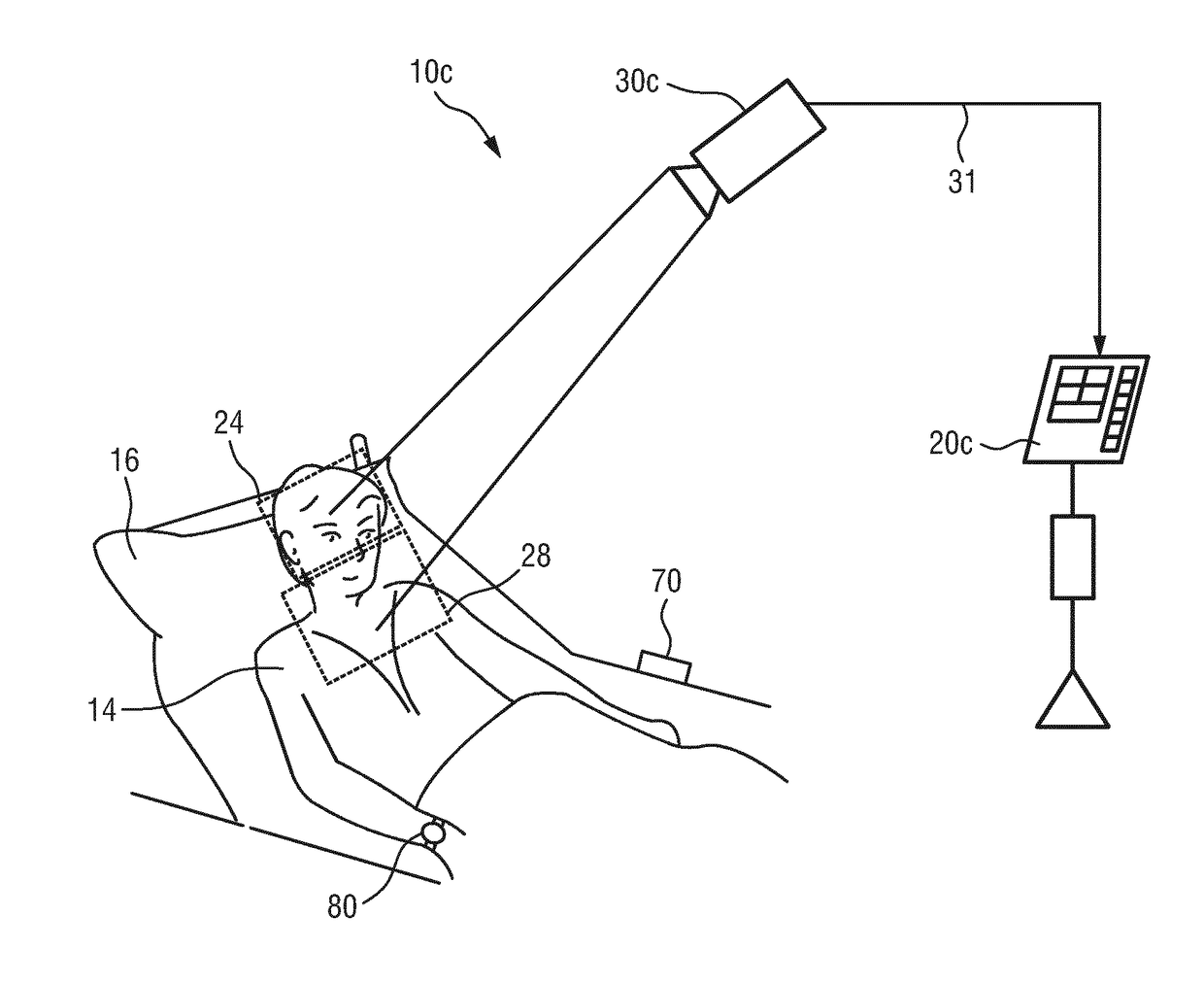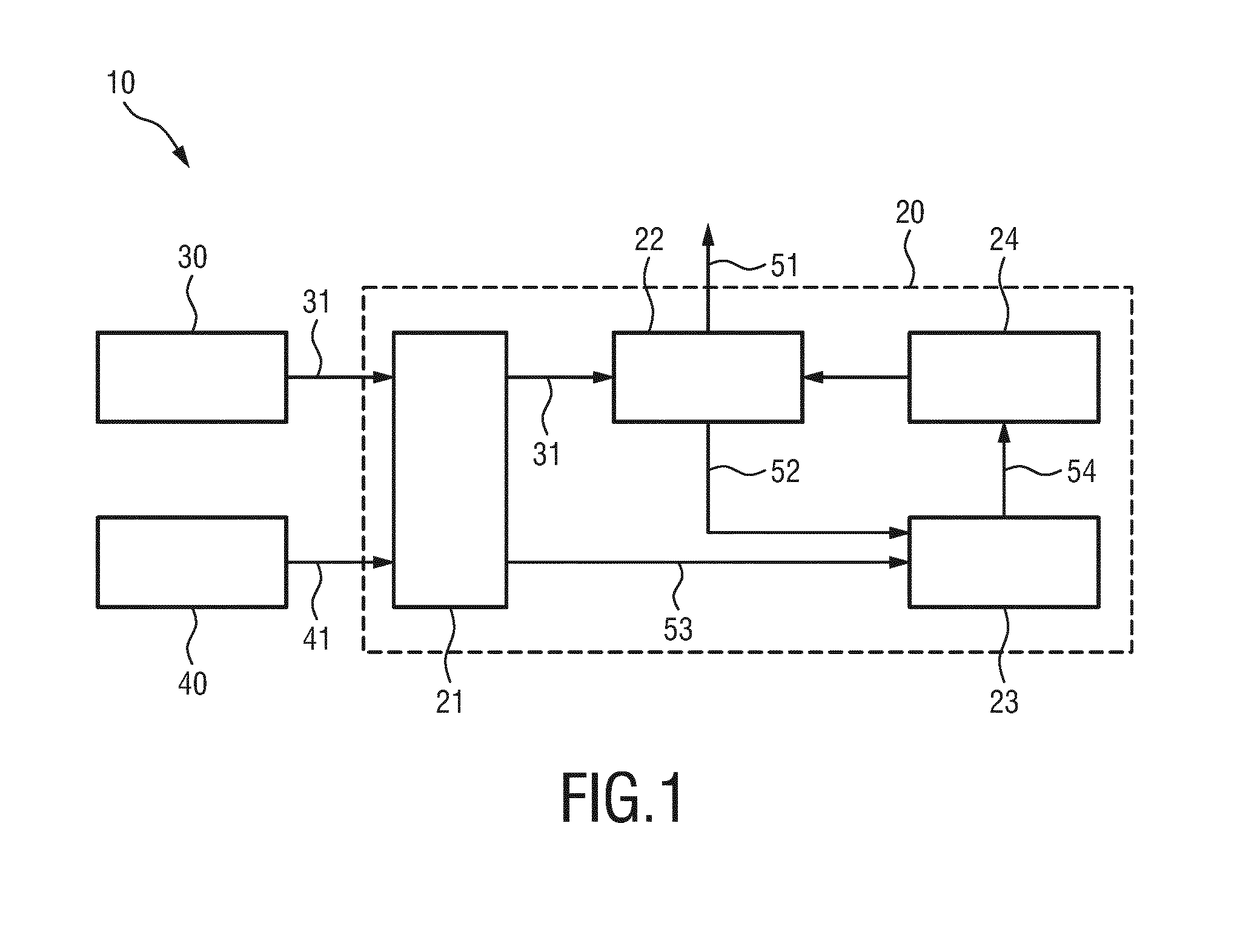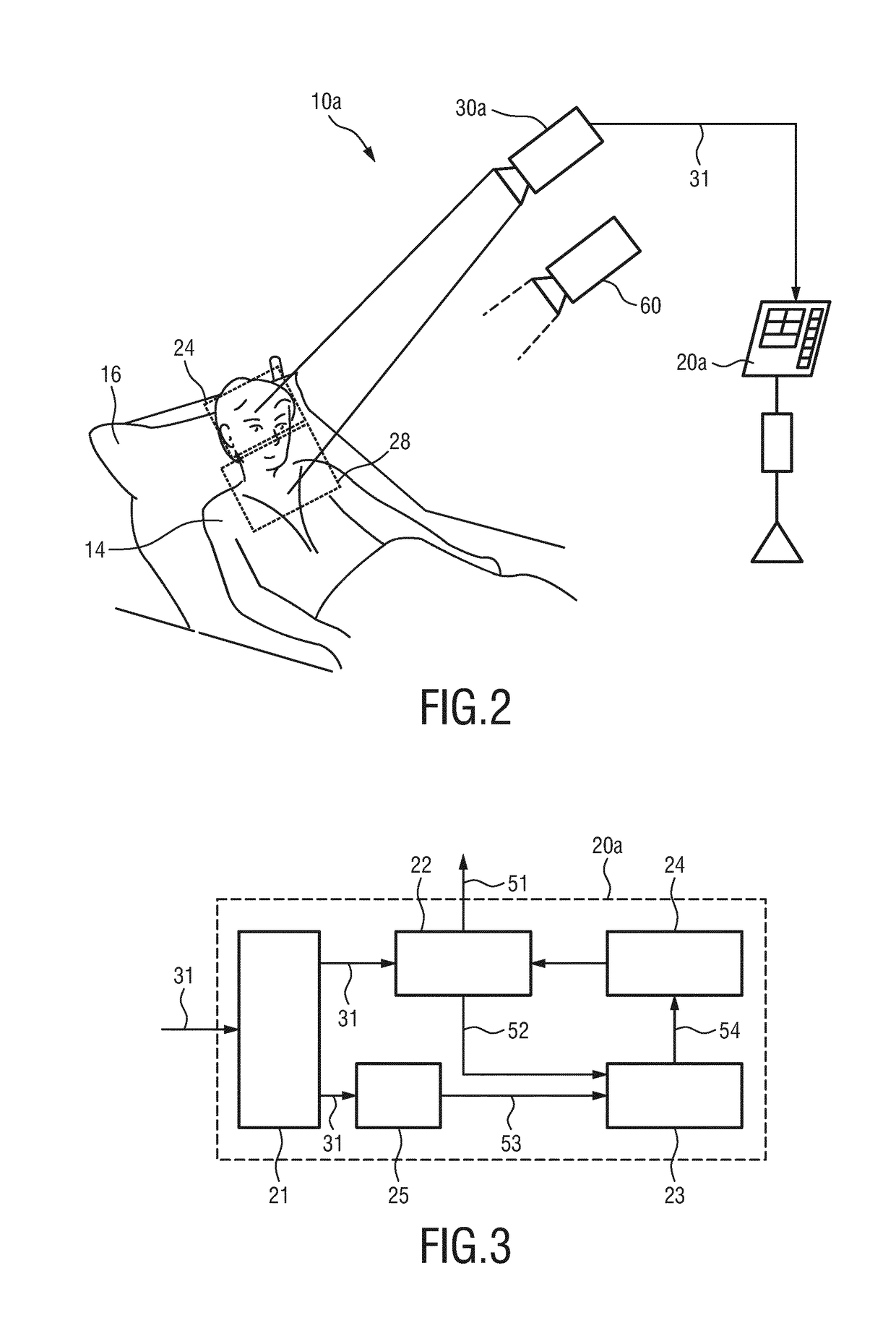Device, system and method for obtaining vital sign information of a subject
- Summary
- Abstract
- Description
- Claims
- Application Information
AI Technical Summary
Benefits of technology
Problems solved by technology
Method used
Image
Examples
second embodiment
[0061]The camera-based respiration monitoring as used in the above described second embodiment of the system and method is generally realized by measuring the subtle breathing motion in the subject's chest (or belly) area. Thus, it critically depends on the detection of subtle breathing motion in the image data. The motion-based respiratory signal monitoring is not always reliable, due to the difficulty of breathing motion detection in certain cases. For example, a neonate in the NICU sometimes has shallow breathing, where it is challenging to detect the very subtle breathing motion. If the algorithm parameters are adjusted to be sensitive enough to the very subtle motion of shallow breathing, another problem will arise: the algorithm may not be able to differentiate the subtle breathing motion from the noises (illumination, camera, etc.). For instance, pointing to the wall, the algorithm can produce the respiration-like signal due to the noises.
third embodiment
[0062]Hence, in the system 10b and the device 20b illustrated in FIGS. 4 and 5 a separate detection unit 40b is provided for acquiring detection data 41 allowing the extraction of the subject's respiration rate or representing the subject's respiration rate in addition to the imaging unit 30b for acquiring image data 31 from a skin portion 17 of the subject 14, e.g. from the face, allowing the extraction of the subject's heart rate. The detection unit 40b may e.g. comprise a plurality of unobtrusive sensors 42 embedded into the bed, e.g. in the mattress. Such sensors 42 may e.g. include pressure sensors measuring a signal representative of body motion of the subject's body, e.g. of the chest wall, caused by the respiratory movements. It is to be understood that the sensors 42 can also be integrated into a textile structure of the bed, such as the blanket or the pillow, or into textiles worn by the subject 14. The respiration rate can thus be derived from the absolute pressure or pre...
fifth embodiment
[0076]In still another embodiment, the control of the HR extraction may be personalized to the subject 14. Personalization may e.g. be achieved by receiving identity data of the subject 14 as input or by recognizing the subject 14 from the image data 31 by use of a recognition unit 27, e.g. a face recognition unit, as conventionally known. This is illustrated in the device 20d illustrated in FIG. 8. The expected changes in the HR can thus be personalized, and the system parameters can be changed accordingly. For example, if it known (from prior data, e.g. stored in a storage unit in the device, in the system or e.g. in a hospital archive) that for person A, 10° C. increase in temperature results in 40 bpm increase in HR, versus person B for whom only 10 bpm increase happens for 10° C. increase in temperature, the system parameters can be changed differently for person A and person B. The same is true for the other factors that influence HR, such as respiration, activity, altitude, s...
PUM
 Login to View More
Login to View More Abstract
Description
Claims
Application Information
 Login to View More
Login to View More - R&D
- Intellectual Property
- Life Sciences
- Materials
- Tech Scout
- Unparalleled Data Quality
- Higher Quality Content
- 60% Fewer Hallucinations
Browse by: Latest US Patents, China's latest patents, Technical Efficacy Thesaurus, Application Domain, Technology Topic, Popular Technical Reports.
© 2025 PatSnap. All rights reserved.Legal|Privacy policy|Modern Slavery Act Transparency Statement|Sitemap|About US| Contact US: help@patsnap.com



